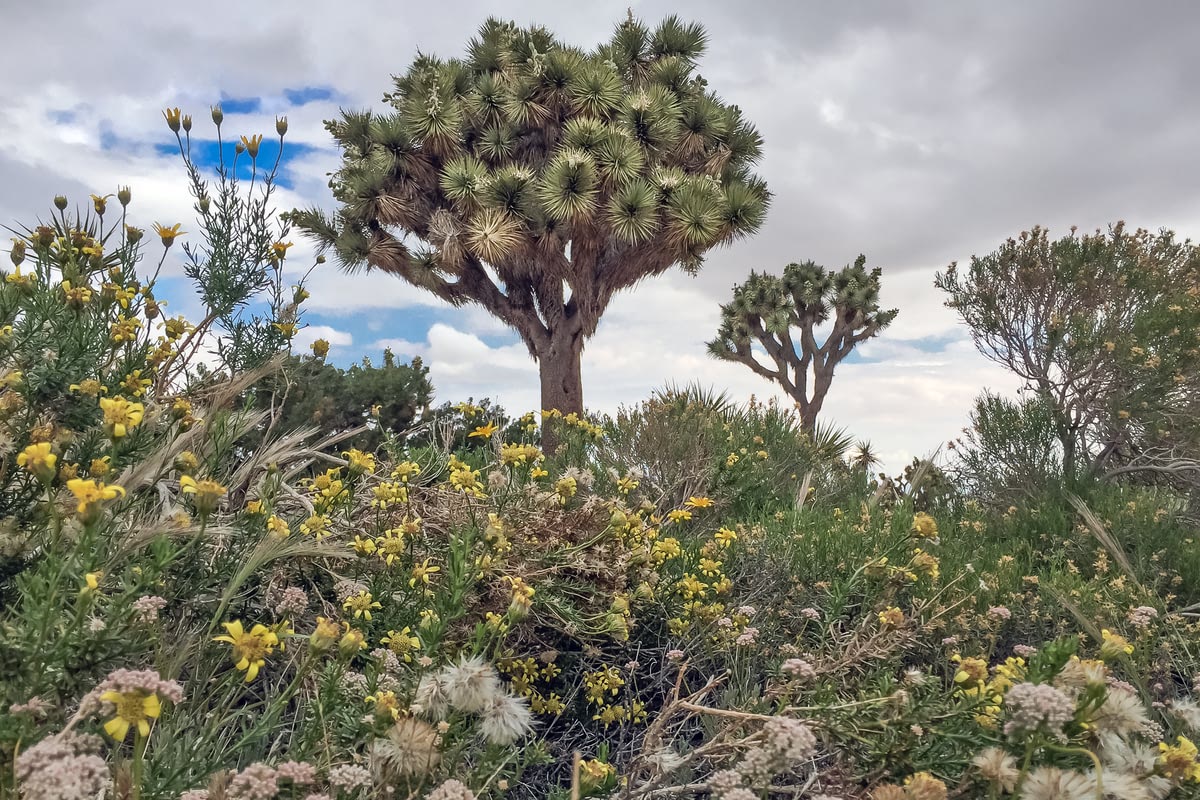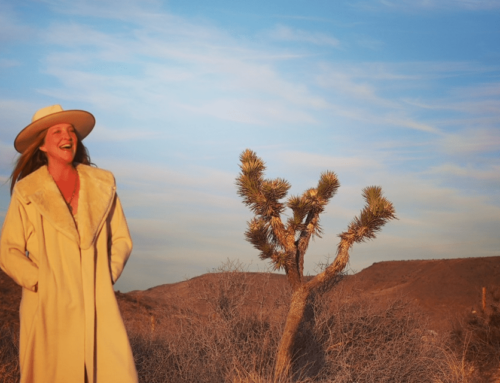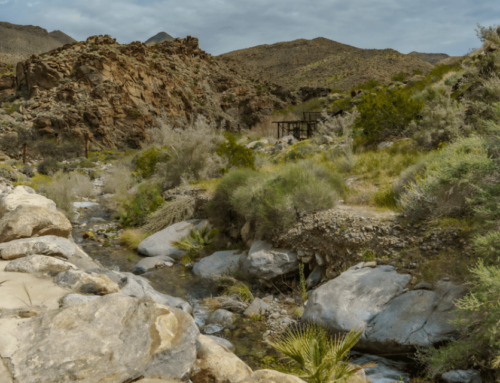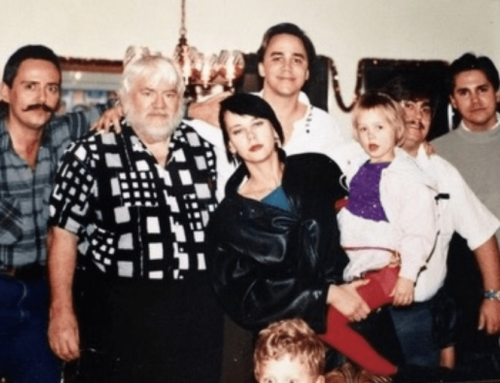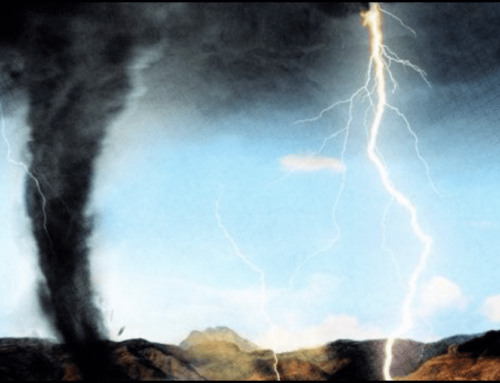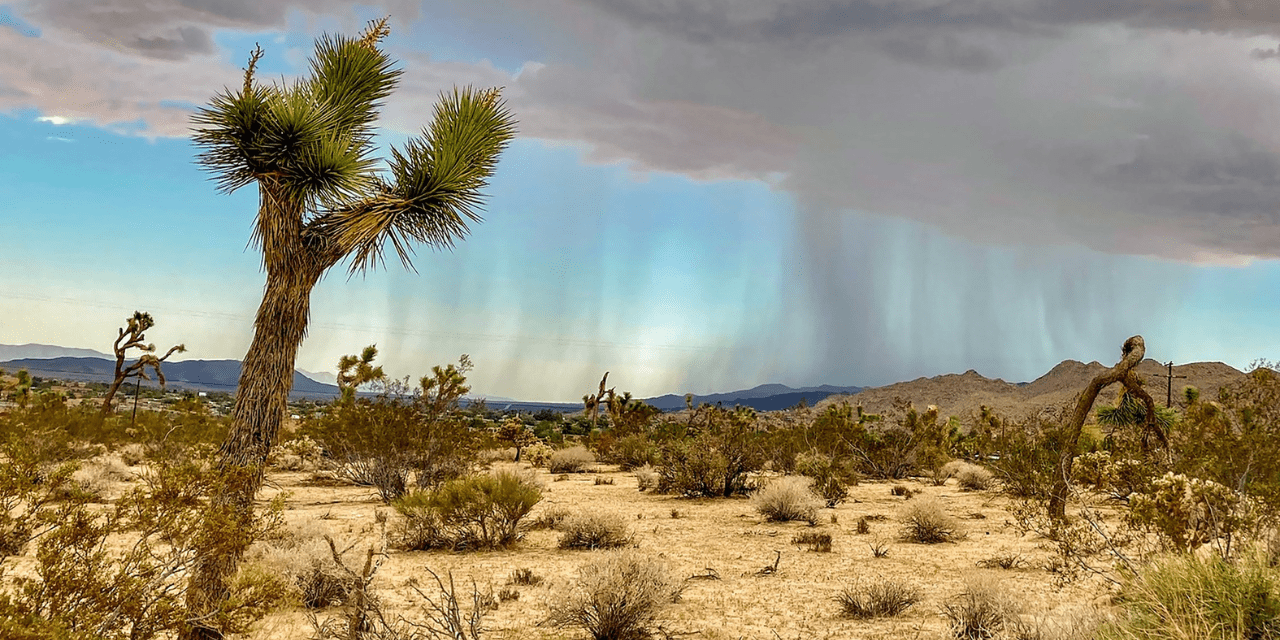
The Process of BLOOMING
By Carmen Aurrecoechea
for Joshua Tree National Park
What does it take for flowers to bloom in the desert? Gentle rain that soaks deeply into the soil is an essential ingredient! Many seeds left behind by previous blooms need rain to saturate soils for their growth. Rain also works to wash away the protective coatings that shield them from the harsh desert. For plants to continue growing, seeds must receive rain at evenly spaced intervals throughout the winter. If only it were that easy! The precipitation falling in abundance this year throughout California typically doesn’t make as much impact in the southern deserts.
That’s because Joshua Tree National Park resides in the rain shadow of two of Southern California’s tallest mountains: San Gorgonio (11,503 ft) and San Jacinto (10,834 ft). These formidable peaks make it more difficult for typical winter rain events to reach us. Often if they do, the park receives much less rain than areas further north or west where storms have already released much of their moisture.
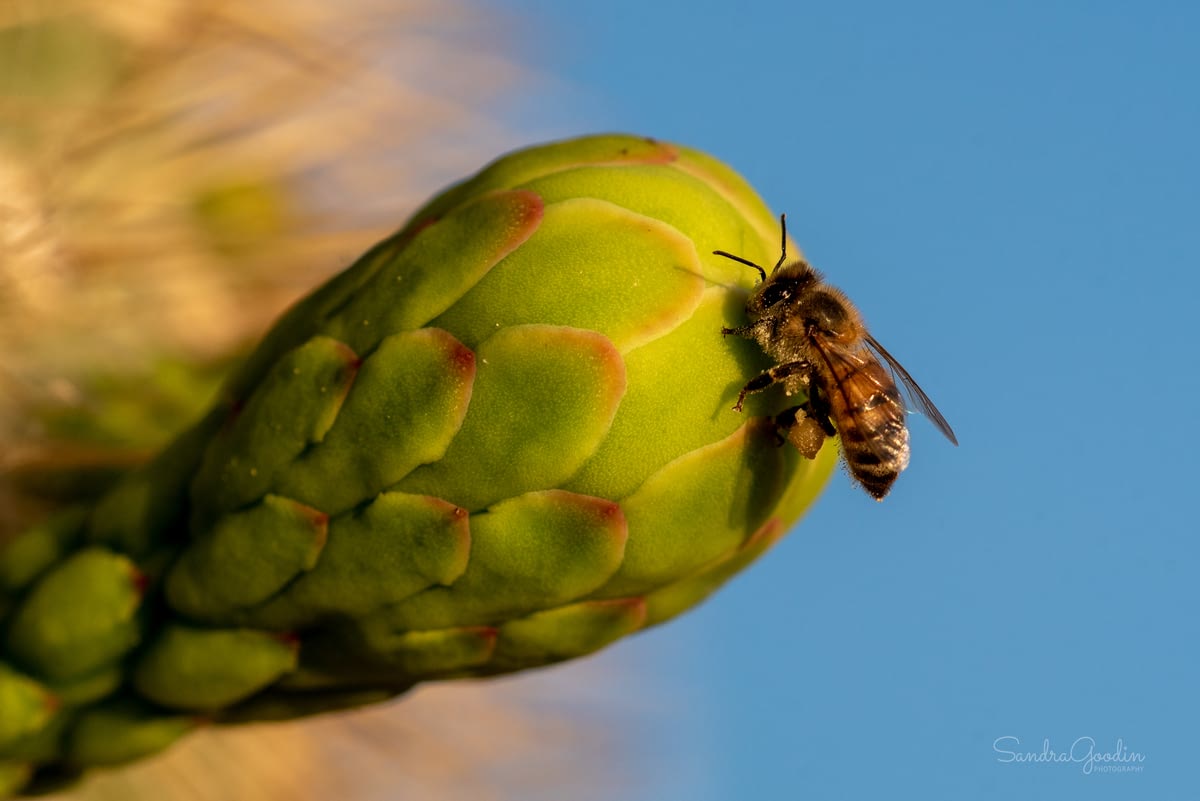
The park is a desert, after all, which means it receives vastly less rain than other environments. Precipitation gauges collect rainfall data throughout the park to measure rain over time. In the Lost Horse Valley, the average amount of rain for fall and winter is 3.61 inches. In the spring of 2019, widespread blooms occurred after the area received 8.25 inches of winter precipitation (229% of the average).
For above-average blooms to occur, the deserts need at least DOUBLE their average rainfall?!
The most recent data collected from the same rain gauge in Lost Horse Valley puts this year’s winter rain at 2.06” or 86% of the average winter rainfall.
The park’s rainfall this year does not indicate an above-average bloom, but that doesn’t mean there will not be spectacular flowers! In an average rainfall year, desert plants work hard to flower, grow, and spread their species! Evidence of this is popping up in the park more and more as it warms back up.
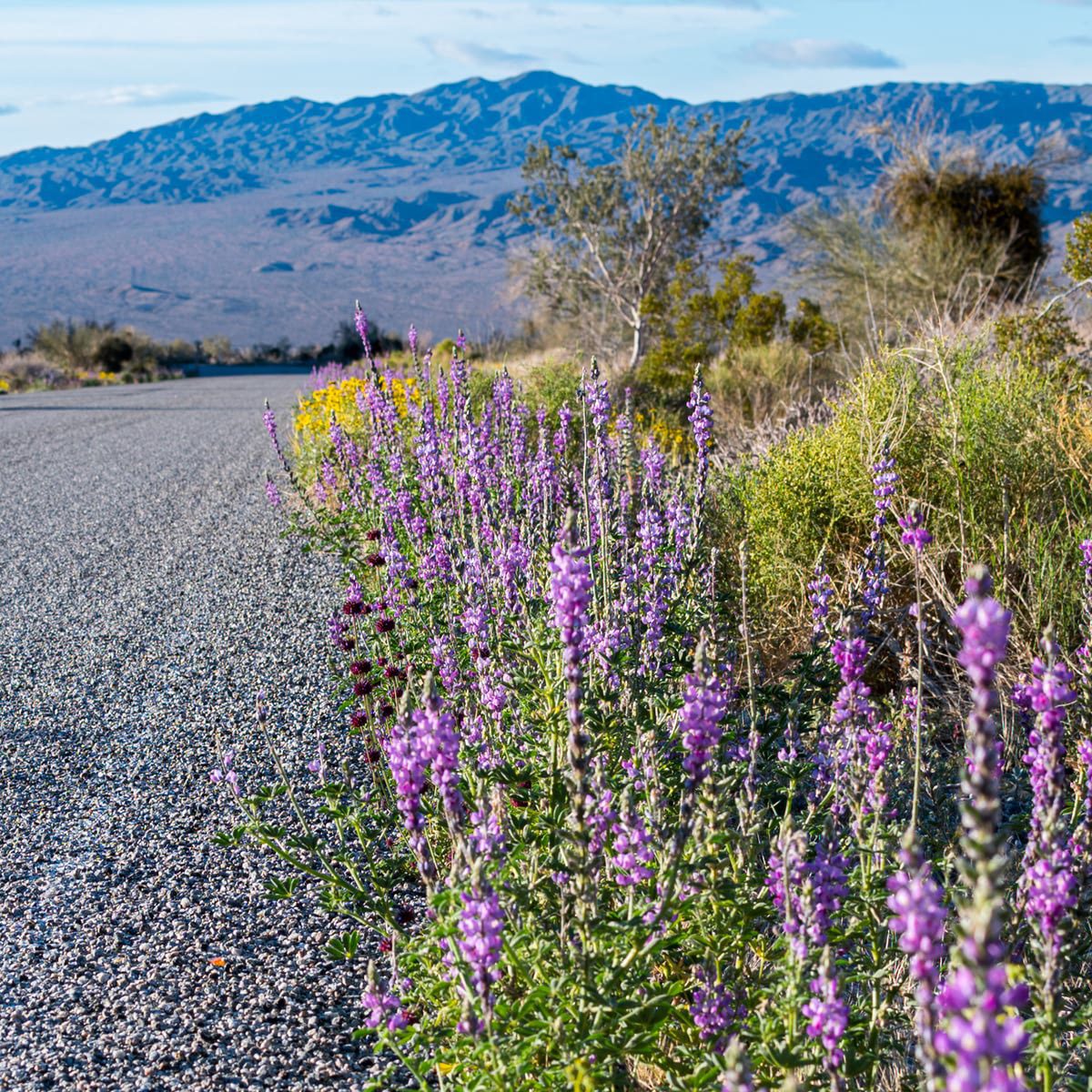
Tune in to Joshua Tree National Park’s social platforms for more updates and information about spring flowers!
Note: Since this was published, there has been more rain so the levels are slightly higher.
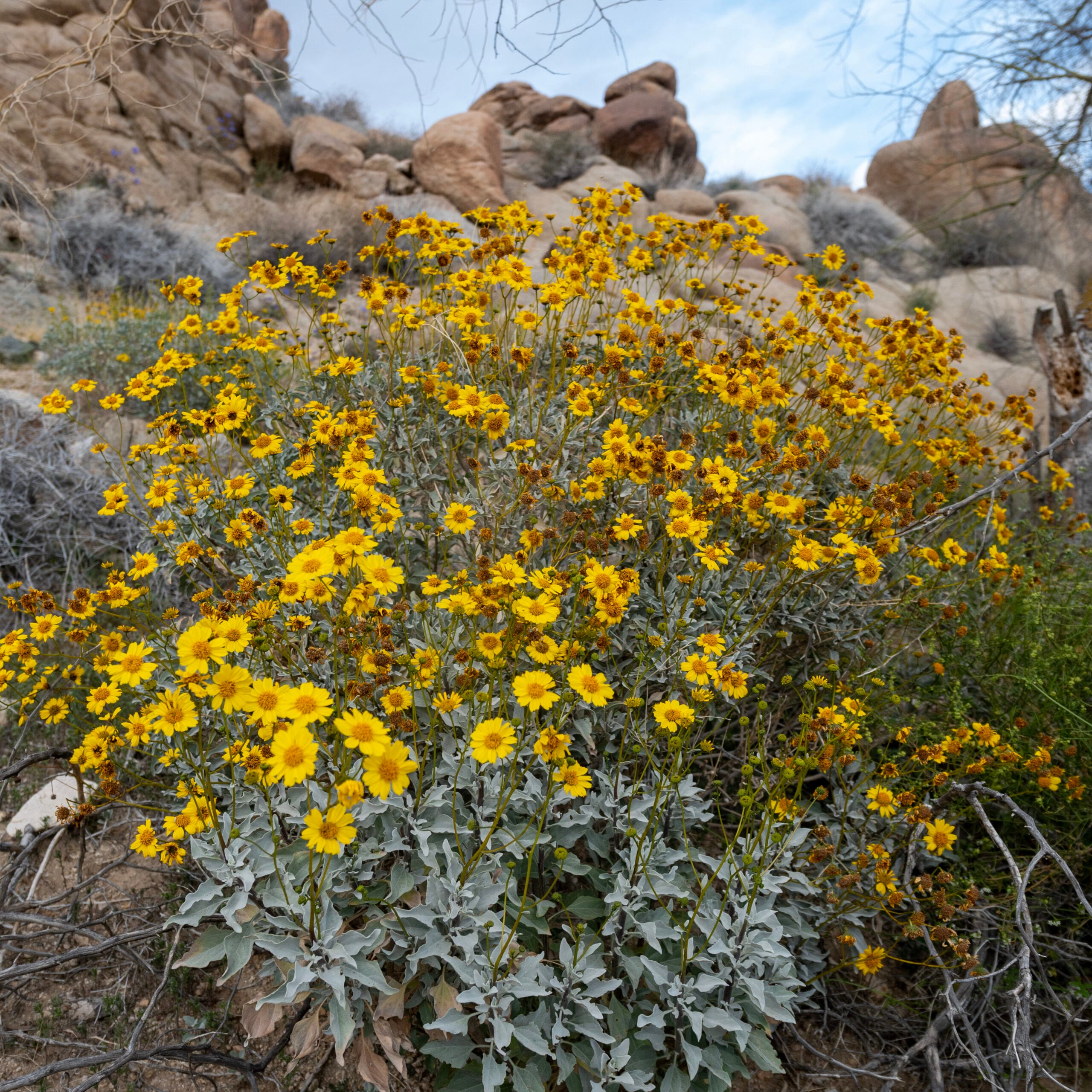
Please enjoy the blooms responsibly to ensure they keep coming back!
Look low: Many wildflowers in the desert are incredibly low growing. They conserve valuable energy and minimize exposure to strong wind and harsh sun.
Move slow: Watch your step and avoid stepping on vegetation and flowers. If you aren’t careful, you may accidentally crush or trample wildflowers or plant vegetation before they have bloomed.
Stay on the trail, and let the wildflowers prevail: Offtrail travel, whether on foot or in a vehicle, can be damaging. It compresses soils, limiting the availability of air, water, and nutrients to roots, and can lead to the decline and death of vegetation. Staying on trail minimizes your impact on fragile plants making their home in the desert.
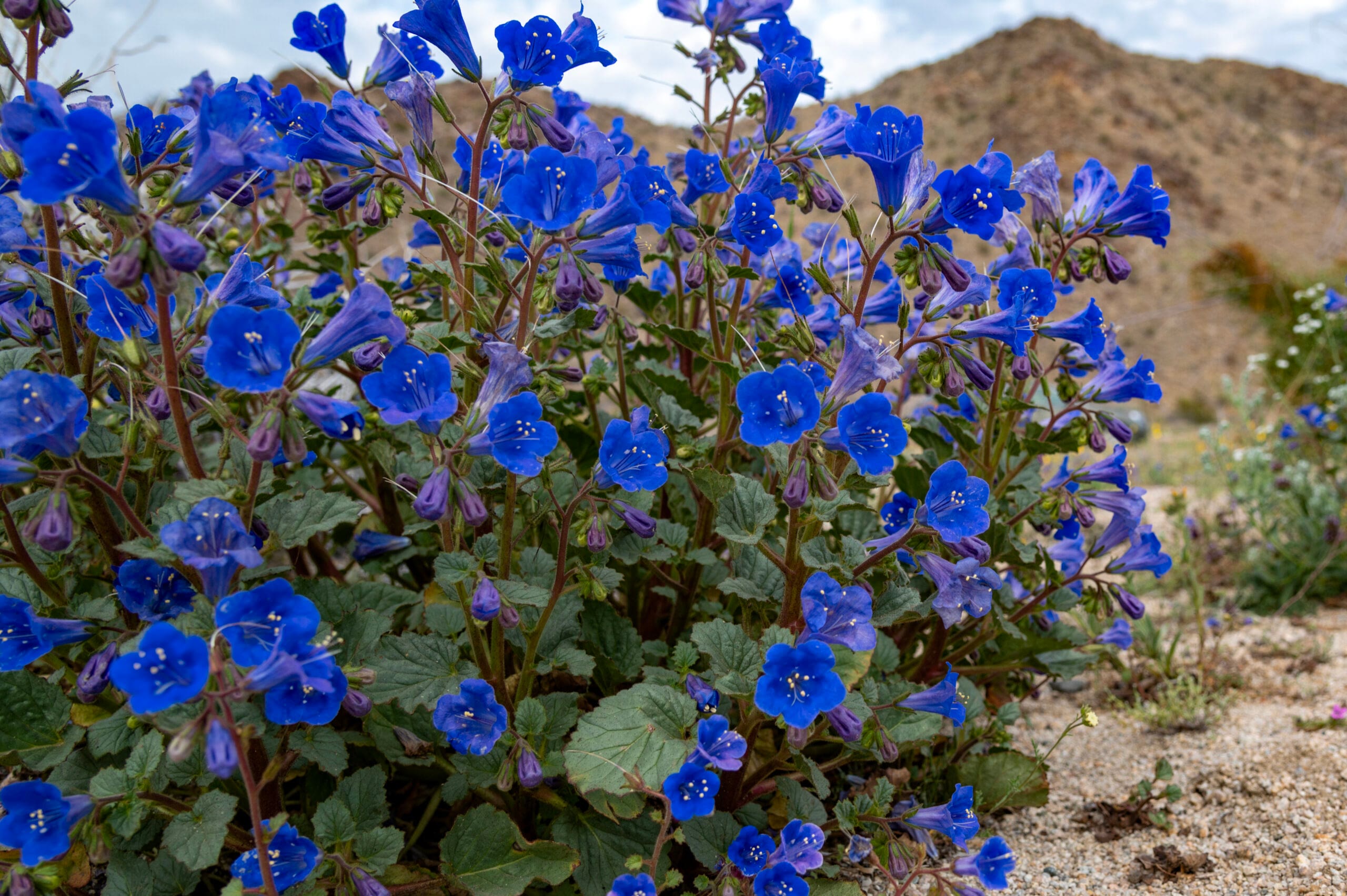
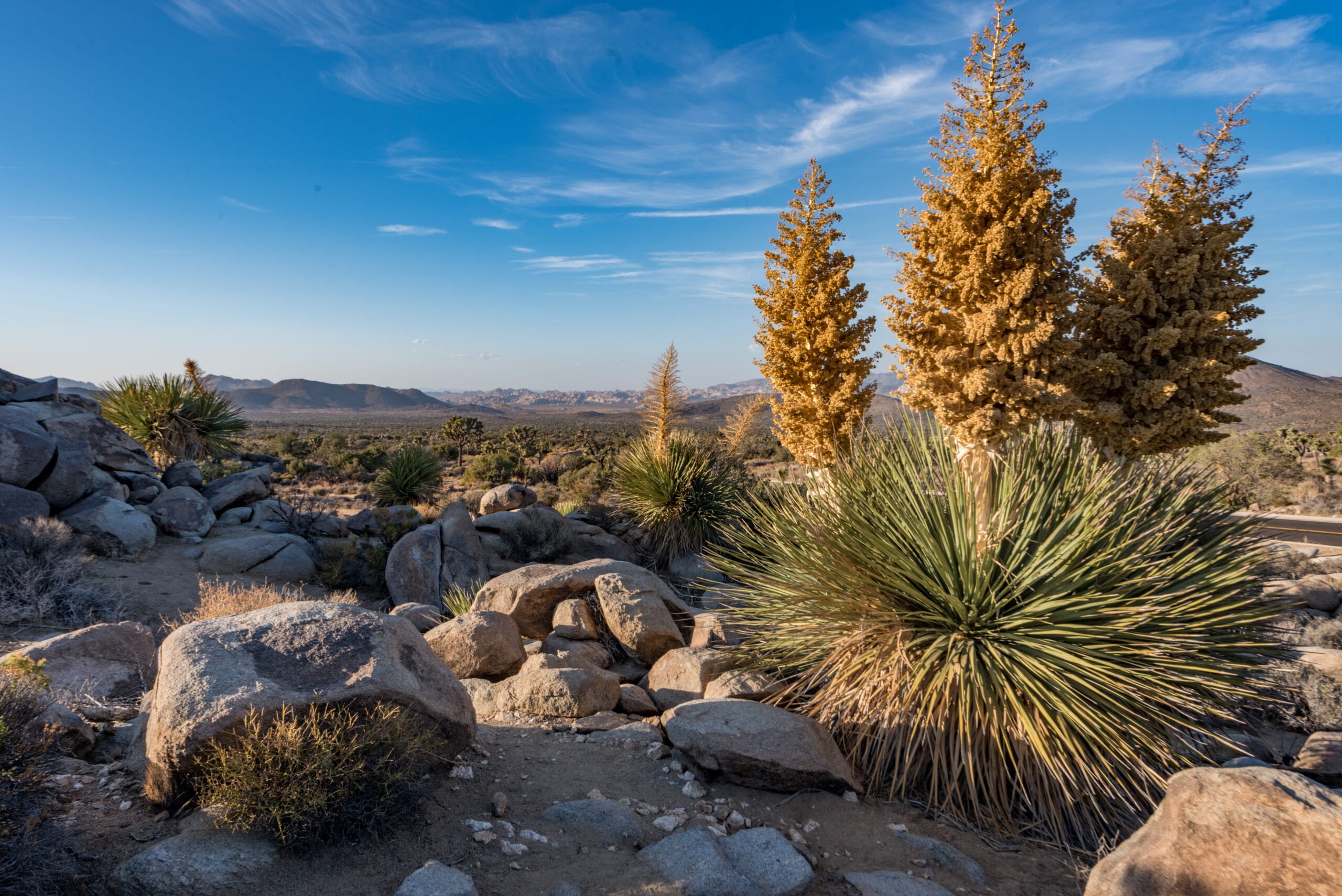
Don’t take flowers; take pictures instead: The potential for future flowers decreases for each flower removed. Please take a photo of them instead of picking the flowers, so they can live on to be pollinated and disperse seeds. Picking vegetation in the park is prohibited.
Flowers are essential to the success of the whole ecosystem. By helping protect them, you help ensure they’ll be around for years to come.
For additional information about wildflower viewing go to www.nps.gov/jotr/planyourvisit/blooms.htm
All photos by Sandra Goodin
sandragoodinphotography.com
